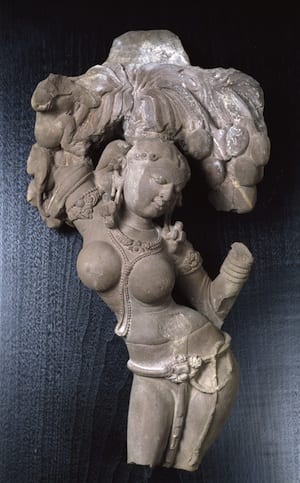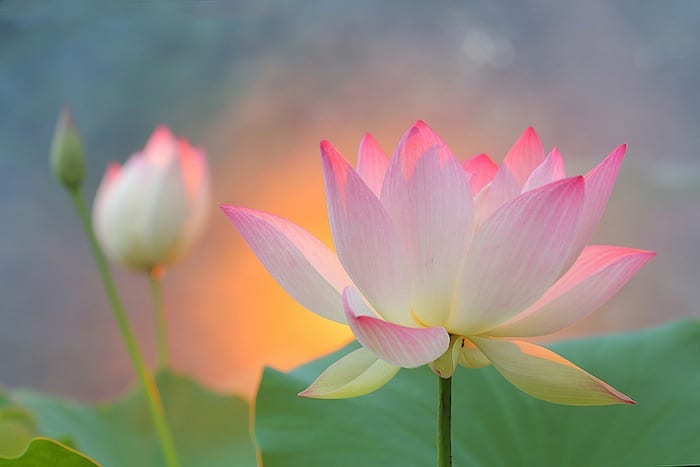
by wpengine | Aug 31, 2013 | Healing

What are you unconscious of?
And why would you want to know?
So much of you—your wounding, relationship dynamics, and patterns—gets played out on the canvas of your life. You may wish some aspects of yourself were different or wrestle with inner conflicts, but just can’t figure out or change them with your mind or will.
You may feel that something—you just don’t know what—is in the way of what you want from your life.
You may have a sense, a knowing, that you’re so much more. Maybe you even glimpse great capacities within yourself but don’t know how to connect with or realize them.
If you sense this, you’re right. There is more to you than what you’re aware of.
Your unconscious is submerged
If you were an iceberg, your unconscious would be 90 percent of it—the submerged part. That’s a lot. Which means, you’re conscious of 10 percent. Which is very little.
It’s hard to imagine, given all that we know about ourselves, we only know such a small fraction of who we are. It’s humbling.
But there it is.
Psychotherapy calls it the unconscious; hypnotherapy calls it the subconscious. Terminology aside, it’s the part of you of which your conscious mind is unaware.
So what’s in your unconscious?
Also called your shadow, your unconscious is an ecosystem of emotions, instincts, and desires which are too painful and too overwhelming to feel. So they’re disowned, denied, and repressed. They’re often negative, like hate, anger and rage, despair, existential angst, revenge, grief, and lovely murderous fantasies.
Your unconscious (or shadow) also holds your inner, unrealized potentials. You have a vast storehouse of incredible capacities, gifts, and resources which you can tap into.
1. Your wounding.
You have inevitable wounding growing up as a child. Inevitable misattunements from your parents or caregivers. Events and situations that were too painful. Childhood memories. Trauma. Infant and pre-natal experiences which got locked in your psyche and body when you were wordless.
a. Your defenses.
These are ways in which you learned to cover over, not feel, not know because it was too dangerous, too threatening, too much. Too ______ (you fill in the blank).
Defenses are brilliant ways of being you developed as a child to stay safe, survive, get and keep the love available to you. But these ways aren’t necessarily true as an adult and in the world beyond your family.
If you went into your head to avoid difficult emotions, you probably intellectualize. If you had trauma, you may dissociate. Or you may use humor as a way to defend against what you really feel.
Even if you had an almost perfect childhood, you still have defenses. Your psyche is a gargantuan, complex ecosystem with rivers of intense emotions which you, as a tiny infant, simply could not be with. (It’s a lot, even for an aware adult!)
b. Your attachment patterns.
These are ways you connect to and relate with people, usually formed in response to your parenting environment.
For instance, if your mother, even though she loved you, didn’t physically hold you enough or emotionally attune to you in the way you needed as an infant or child, you might have anxiety and feelings of abandonment in your relationships.
c. Beliefs.
Beliefs are the railroad tracks of your experience. They’re the shape you form as a child in response to your caretakers and environment. Filters of your experience, beliefs are the grooves in your brain which lock you into perceiving yourself, others, and the world in a certain way.
Some examples are:
“I’m not good enough”
“I need to do and be perfect to be loved”
“I’m lovable”
“The world’s a safe, exciting place”
d. Past lives.
If you’re prepared to travel that far back, your subconscious also records your past lives. It’s a repository of your experiences beyond our time and space dimension.
2. Your hidden potentials.
This is the good part. This is all that you can be but don’t know yet. Haven’t stepped into yet.
Who you would be if you don’t have your current limiting beliefs?
For instance, if you believe you’re unlovable, it would be really hard to receive love and care even when they’re available. On the other hand, when you know you’re loved you receive affection with ease and receptivity.
Also, your unconscious is a treasure chest of your unclaimed talents, power, gifts, creativity, capacities, inner guides and resources, psychic and spiritual abilities. And your Higher Self.
Your unconscious has access to potentials even beyond what we currently know as a human race.
There’s latent magic lying in wait for you there.

by wpengine | Aug 21, 2013 | Healing

How sensuous are you?
How do you feel about your sensuousness?
Would you like to be more sensuous?
Your sensuousness is essential to who you are. You have an animal body which is primal, with hungers and needs. It feasts through your senses.
The mind-body split
Finding time and ways to connect with your sensuousness in your fast and full life can be challenging. Deadlines, daily pressures, and technology can separate you from your sensuous life.
You may want to be more sensuous. You may want to increase your desire and capacity for pleasure. You may have body inhibitions, addictions, or trauma which don’t let you be as sensuous as you’d like to be.
Chances are, you don’t live close to the land as did your agricultural, pagan ancestors. Rubbing shoulders and hips with animals and nature, their bodies were more free and open to shakti, life energy. The Earth’s fertility, vitality, and abundance was their work and play. But centuries of patriarchal religions, Cartesian thinking, and an increasingly mechanized world have created a mind-body split.
When your mind and body are divided, you:
- look for happiness and fulfillment in things outside yourself. But happiness doesn’t lie in what’s external; it lies in your experience of them. And that includes your sensory experience.
- objectify or minimize the importance of your body. When you block, repress, or shame shakti, life energy, you’re less sensuous and embodied, which can cause physical and mental disease.
- lose out on the pleasure, wild innocence, and wisdom of your animal body.
Come into your animal body
One way to heal the mind-body split is to come into your animal body. Your senses. And your sensuousness.
The more sensuous you are, the more alive you are. You feel good. You have more capacity for pleasure, desire, body-bliss, and ecstasy. Your life energy, shakti, flows free, clear, and vital. On top of feeling good, being sensuous is actually beneficial for your health.
Sensuousness is the language of your animal body. Free, wild, and instinctual, it has its own wisdom. It’s a simple language: what feels good, alive, and pleasurable? What doesn’t?
{ListIt2Quotations item=’soft-animal-body’ detailtemplate=’blogquote’ action=’detail’}Your sensuousness is unique to you. You’re sensuous in your aesthetic taste, whether you’re decorating your home, choosing the colors you wear, or the fragrances you enjoy. As well as the music, poetry, architecture, or sculpture, or art that please and captivate you.
Sensuousness always feels good. It’s only judgements and beliefs that condemn it.
Although sensuousness is often associated with sexuality, you can be very sensuous without being sexual. It’s a practice and capacity that you can develop.
How to become more sensuous
1. Be aware
Your awareness is everything. Just as your eyes see the world, so your awareness ‘sees’ your experience. Use your awareness as a flashlight or laser to direct and focus on what you want to sense.
The more you develop your awareness, the more rich, nuanced, and textured is your sensory experience. One way to increase pleasure is to increase your awareness of pleasure.
2. Slow down
Your animal body has a different time pulse than your lightning mind. Slow down, tune into your body and sensations, and bring your awareness to each one of your senses.
What do you see? Hear? Smell? Touch? Taste?
Notice how your pulse changes. How your breathing lengthens and deepens. How your body relaxes.
3. Give yourself permission
Getting out of your mind and into your body is part of the journey. The mind-body split has you riddled with no’s, shouldn’ts, and must nots.
Allow yourself to really touch, know, and relish your sensation. Satiate your animal body’s greed and hunger. If or when you stop, get curious about why not. When you come up against an “I shouldn’t,” or “It’s not okay,” ask yourself, “why not?”
If your sensations seem overwhelming or too intense, you might consider seeing a therapist.
4. Enter your sensations
When you enter your sensations, you go deeper than feeling them. You can feel an ache, a tug, or a clutch in your body and stay on its surface.
When you enter your sensation, you actually merge and tunnel into it. You become one with it and surrender to its flow. You’re carried by its stream of energy. You’re surfing its wave.
You surrender yourself to your sensation.
5. Be curious about how you sense
You meet each moment wherever you are. And with whatever you’re carrying. Which is why when someone touches you when you’re distracted, you barely notice it. Yet when you’re present, you drink in the full sensation of the same warm and caring touch.
How do you meet each sensory moment? What emotions come up? Are you open? Curious? Reverent? Ashamed? Fearful? In awe? Trusting? Closed? Afraid? Adventurous?
How are you meeting this moment? And this? And this? And the next…?
6. Take up an art form
Engage with an art, aesthetic, or embodied practice. Yoga, music, sculpture, flower arranging, woodworking, or making chocolate are some ways in which to immerse yourself in your senses.
7. Practice
Sensuousness is a practice and self-discovery. You may find the more you practice, the more you discover sensation. Some mantras with which to cultivate your sensuousness are:
- What am I sensing?
- What emotions or thoughts come up about what I’m sensing?
- What gets in the way of my staying with this sensation?
Or you may come up with mantras of your own which keep you sensuous.
Models of sensuousness
 I look to yakshis, Indian nature spirits, for their voluptuous sensuousness. Reveling in Earth’s playground, they’re seen entwined or merging with playful abandon into a tree, snake, or vine.
I look to yakshis, Indian nature spirits, for their voluptuous sensuousness. Reveling in Earth’s playground, they’re seen entwined or merging with playful abandon into a tree, snake, or vine.
They’re a beautiful metaphor of how your animal body is intimately and inseparably connected to the Earth. They model a luscious sensuousness with all its delight and innocence and without shame or inhibition.
They show the sheer pleasure of just feeling good.
And that’s sacred.
What are some other ways you stay sensuous? I’d love for you to share them here.

by wpengine | Aug 17, 2013 | Healing

What do you do when everything falls apart?
You know, those times.
A breakup. A death of a loved one. Losing your job. An illness. A mid-life crisis. Or when just about everything in your life explodes.
Yes, those times of crisis.
When the ground you stand on cracks open. When what was secure and steady is now uncertain and chaotic. When you feel out of control. Helpless. Scared. And lost.
You think: It’s not supposed to! How will I get through this?
What you try to do
So you try to hold on to what you had. You desperately try to return to who you were. You try to regain the safety and security you felt.
But it just doesn’t work. Because everything’s changing.
{*html to format blockquotes or read instructions on blog quotations *} {*
Barn’s burnt down —
now
I can see the moon.
*} {ListIt2Quotations item=’barns-burnt-down’ detailtemplate=’blogquote’ action=’detail’}
Why change?
When everything in your life changes, it means you’re reaching the limit of who you are now. Like a snake sloughs its skin, you’re being pushed and birthed into a new version of yourself. For that to happen, some parts of you must dissolve, disintegrate, even die.
Without change, you stagnate. Who you are now must give way to who you will be.
Kāli, the dark goddess of destruction, is dancing her dance. The dance of chaos. The dance of change.
The third energy in the life wheel of creating-sustaining-dying, Kāli destroys to make room for new life, vitality, and growth. Just as winter dies so spring can be born, so the old must give way to the new. There’s wisdom at work here.
When everything in your life changes, it means you’re getting ready to transform. You’re preparing for a new identity and way of being in the world.
When everything in your life changes, it’s an opportunity. Will you take this energy and run with it? Or not?
How to work with change
1. Accept and embrace change
You want to turn back the clock. You want things to return to the way they were.
You want your relationship or job back, and the security and comfort of the way things were.
It can be really hard to accept change. You feel uncertain, anxious, and afraid. Mostly, you’re not in control.
But at some point you get, really get, that things won’t return to the way they were. The only way is forward and different.
You’ll get the most out of this period by working with change instead of fighting it.
2. Be present
Stay present with yourself and difficult feelings like fear, anxiety, and confusion.
Allow yourself to feel. When you’re sad, angry, or confused, be with it all. Let yourself cry if you’re grieving.
You may be tempted to do things or distract yourself to regain some sense of control.
Try staying as close to your feelings as you can without getting overwhelmed.
Breathe. Deeply and often. Especially when you’re feeling something intense.
3. Don’t do — allow
This time is about letting go of who you used to be, which means not knowing who you’re going to be in the future.
Change can be scary. It can be tempting to distract or numb yourself or return to old ways you used to do things.
The more you allow change to organically happen, instead of willing or forcing, the more authentic and rewarding it will be.
Trust your feelings, your body, and your heart.
The best way to birth the new you is to allow what wants to shift and come forward.
When you ride the wave of change, you get the most out of it.
4. Seek support
It can be really helpful to seek support at this time from a therapist, coach, or healer. Intense feelings are natural and it can be a huge relief to have a safe space and relationship in which to process.
Reach out and connect with friends, family, and community who understand what you’re going through.
Consider joining local groups and communities, or online groups if there aren’t any in your area.
5. Do your inner work
When life falls apart, it’s a clear message that some ways of being, often beliefs and patterns, are outdated.
- What themes are showing up?
- What about you is being challenged?
- What’s being stirred in your unconscious?
- What are you ready to let go of, heal, and transform?
Use this time as an opportunity to clear and release old ways of being and shift to a more authentic you.
Again, work with a therapist or professional to get to the root of what this is about for you.
6. Nurture yourself
Be gentle and compassionate with yourself.
Nurture yourself with self-care.
Do things that are grounding for you, like yoga, tai chi, gardening, or make things with your hands. Do what’s soothing for you, like listening to music, playing an instrument, or hiking in nature.
Maybe meditation, an awareness or spiritual practice, or prayer will feel centering and grounding.
7. Learn to be with not knowing
Learning to be with not knowing can be unnerving, yet energizing. All your fears will come up. But it also holds gifts you’ve longed for.
It’s like being in a dark room, in which you slowly begin to see. You start to see and feel things which you didn’t when the lights were on.
Trust yourself. Maybe you’ll discover something about yourself. Give yourself a chance to explore.
Do things differently. Allow yourself to make mistakes. Fall down. Pick yourself up. Try new ways of being.
What are some other ways you’ve navigated life when everything falls apart? I’d love for you to share them here.

by wpengine | Aug 8, 2013 | Healing, Spirituality

The twists and turns of my life have led me to becoming a psychotherapist. Originally from India, the land of spirituality, I’ve had a deep spiritual path my entire life. Vedanta, Tantra, Kundalini awakenings, and Integral Yoga are as familiar to me as my breath.
But, being Indian, I had a blind spot about the psyche and emotional healing. Psychology is a Western field, to which India has yet to open and embrace. So I came late to psychotherapy—at 40.
That’s what makes me passionate about psychotherapy. So profoundly transformed by it, I love helping others do the same. I love helping people heal their wounding and discover they’re so much more than that. I love helping them grow into their authentic selves and live their Truth.
After getting licensed, I knew there was more. I sat with the question: What is healing?
The answer came soon after as a Lyme Disease diagnosis. In 2009, alongside traditional and alternative medicine, I visited a spiritual healer in Brazil. My worst symptoms vanished in two days. And in eighteen months, I was completely healed.
I also received an incredible amount of emotional and psychological healing, which was life-changing. And all manner of guidance about my life.
When I learned about soul lessons, something unlocked and clicked in me. I finally had answers to questions I’d been asking for much of my life. I finally had a perspective which made sense. My life’s purpose and meaning lay clearly before me.
My many palpable experiences of guides and beings awed and intrigued me—that so much healing and guidance is always available to us. Right here, right now. Even if we can’t see it.
My healing and transformation shifted me to living a soul-led life.
It was one thing to receive spiritual healing in Brazil. It was quite another to integrate it into my world as a professional psychotherapist. After all, even in San Francisco, there aren’t many social or professional situations in which you can say you were healed by exalted vibrations of Light and Love without people hastily ending the conversation.
There’s so much we don’t know about healing, yet is available at arm’s reach. My healing journey made me realize how much our spiritual life, relationships, past lives, unconscious (yes, even more than psychotherapy does!), energy and light bodies are interconnected with our physical and emotional health.
Psychotherapy was my doorway to the realm of healing. My experiences of spiritual healing set me on an exploration of healing beyond its paradigm.
So I trained in Past Life Regression Therapy and Hypnotherapy. I shifted to include working energetically and intuitively.
I love helping people step into and live from who they really are. I’m excited when they tune into their inner guidance and intuition. And I’m most fulfilled when they open to and unfold their  connection to their heart and soul.
connection to their heart and soul.
For you are beautiful, magnificent, and powerful—much more than what you know.
I’m starting this blog because I want to share what I know about healing with you.
Whether traditional or alternative, every modality has something useful to offer. I want to integrate and share what I know and continue to learn with you. Some of my areas of interest are spirituality, psychology, healing, and the Divine Feminine.
This blog is also about being and becoming a Goddess. Which is no small feat for we—regardless of gender— are goddesses in process. It’s a practice we’re in. Every day. Whether we know it or not. Intend to or not.
The blog category ‘Divine Feminine’ travels through the rich, gorgeous, and juicy pantheon of Indian goddesses, more ancient than time itself. They offer you wisdom, grace, and power as you travel through your own life.
It’s a place for you to connect with Her, and invite Her into your heart and home. It’s a way to celebrate your femininity or your feminine nature. It’s a way to know yourself as the Divine Feminine.
I know you’ll be drawn to what speaks to you here. And I would love to hear from you. I’d love for this blog to be a place where you can connect with me and others to share your experiences and reflections.
I’d love for it to be a space where you can sit down, kick off your shoes, curl up with your favorite beverage, and talk.
Welcome to my blog!



 I look to yakshis, Indian nature spirits, for their voluptuous sensuousness. Reveling in Earth’s playground, they’re seen entwined or merging with playful abandon into a tree, snake, or vine.
I look to yakshis, Indian nature spirits, for their voluptuous sensuousness. Reveling in Earth’s playground, they’re seen entwined or merging with playful abandon into a tree, snake, or vine.

 connection to their heart and soul.
connection to their heart and soul.
Recent Comments